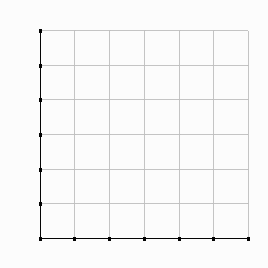2 ways to look at demand:
Key points:
(1) Demand curves reflect marginal benefits (MB).
(2) demand curves always slope down ("law" of demand)

II. The Micro Economy
A. Market fundamentals: supply and demand
2. Demand (D) and Marginal Benefit (MB)
Learning objectives: Draw and interpret a demand curve (D). Distinguish between what causes a movement along demand versus a shift of demand.
a. Basic concepts and properties
Buyer's benefit-cost rule:
Marginal Benefit = the extra benefit of consuming
one more unit
MB > P => buy it
MB < P => don't buy it
| 2 ways to look at demand:
Key points: |
|
? Why?
As consumption of an item rises, the additional benefit from having
even more falls.
"the more you drink the less thirsty you feel."
(i) saturation (diminishing
marginal benefit)
(ii) substitutes
This is one reason that economists prefer to talk about wants than
needs: Rarely is there a good that we want a single amount of, no matter what the price
is: the Q we want changes depending on the price we pay.
Exception: insulin for a diabetic. Quite rare
| (3) price steers consumption of an item to its highest-valued uses. |
|
b. Movements along versus shifts of demand
(i) A movement along demand is called a change in "quantity demanded" (Qd)
| When price changes,
we move from one point on a demand curve to another. => a change in "quantity demanded" (Qd) Ex: movie tickets Show a fall in price |
|
Even for "necessities," at the prices we usually confront when making our decisions, we do respond to price, since we can alter consumption for low-priority purposes.
(ii) Shifts of demand require us to draw a new demand curve
Sometimes other things change which create a whole
new demand curve--a whole new relationship between price and quantity demanded.
Ex: increased D:
People want more at the old set of prices
People will pay more for the old set of quantities
| What
would happen to the demand for movie tickets if... (1) Income (increases) Higher income raises demand for most goods Normal good => Higher I --> more demand Inferior good => Higher I --> less demand Example of an inferior good? |
|
(2) Prices of related goods
Substitutes
(rises):
Demand increases when the price of a substitute rises (and vice versa)
Example Demand for movie tickets rises if the price of DVDs rises
Complements:
Demand increases when the price of a complement falls (and vice versa)
Example Demand for movie tickets rises if the price of popcorn falls
(3) Tastes: Movie wins an Academy Award
(4) Number of buyers: Movie rating changes from NC17 to R
Also: (5) Expectations: Rumors that studios will sue online pirates
When drawing a single demand curve,
these things are held constant
Does
beer have market substitutes?
Yes: name one / No: why not
At the
margin, virtually everything has substitutes
In economics, the question is not
whether you can live with or without something, but whether you can live with
more or less of something.
See
Recap
worksheet
3. Equilibrium
Now: put the two sides of the market together.
Focus for now: Product markets
Demad: Households are buyers.
Their benefit: the satisfaction they get
Their cost: the expenditures they make
Their benefit-cost rule: Buy more as long as MB > P
Supply: Firms are sellers:
Their benefit: the revenues they receive (note that that is just our
expenditures)
Their cost: the cost of the resources they use
Their benefit-cost rule: Sell more as long as P > MC
The interaction of these two
sets of participants results in a market equilibrium.
That's what we turn to now
Learning objectives: Diagram an equilibrium and explain how market forces maintain it. Illustrate how changes in supply and demand affect a market equilibrium.
Illustration: personal computers worksheet